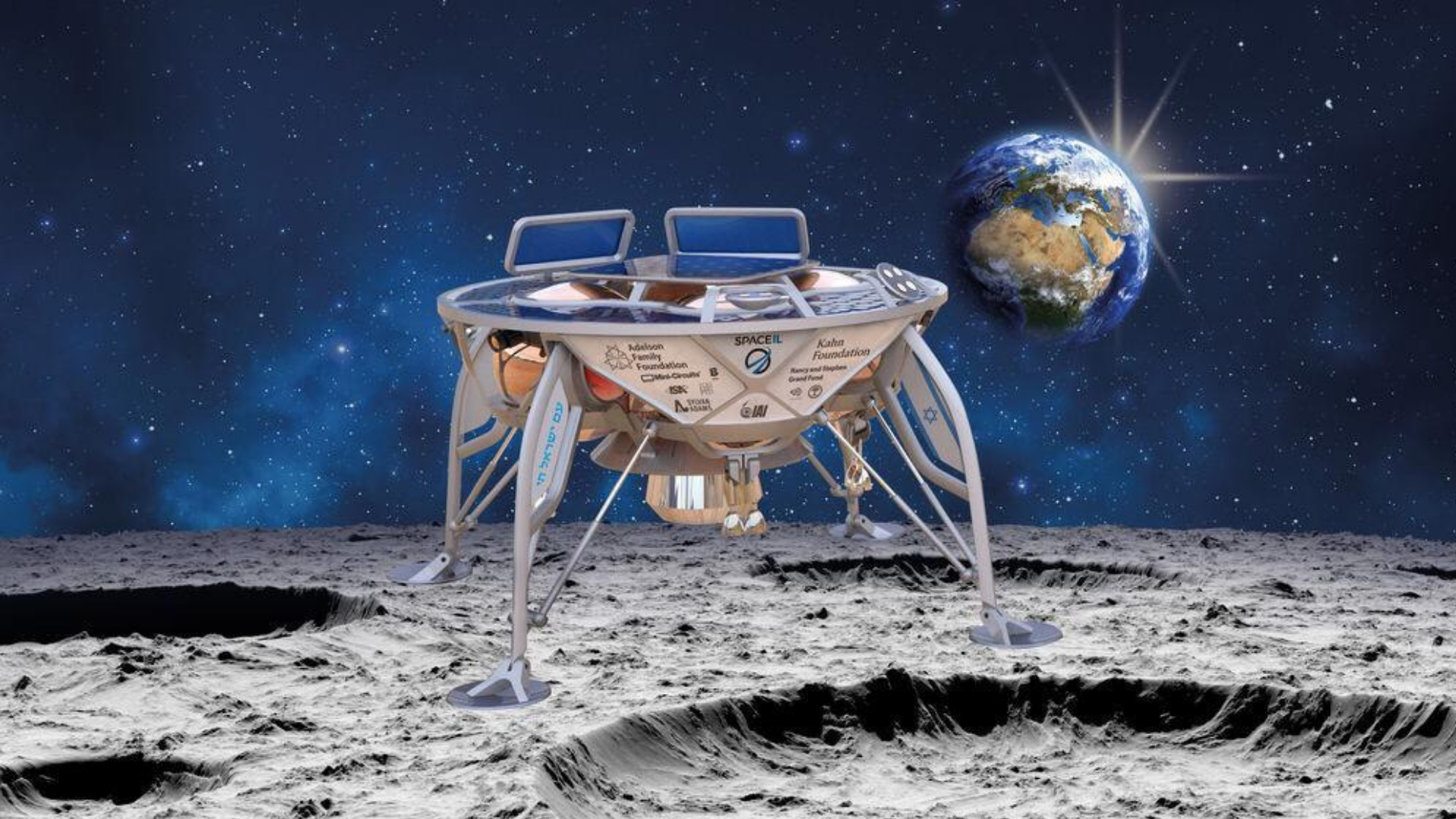Is Israel about to become the fourth nation to land on the moon?
SpaceIL is launching a lunar lander tonight

The Man in the Moon is about to get one in the eye. Tonight sees the blast-off into space of the first privately funded mission to the Moon.
Due to launch on a SpaceX rocket from Cape Canaveral in Florida, Israel-based SpaceIL will send a spacecraft to orbit the Moon and, sometime during April, attempt to put a lander called Beresheet (Hebrew for 'Genesis') on a section the lunar surface often visualised as the right eye of the Man in the Moon.
Can I watch the launch live?
Yes. It's due to launch late on Thursday, February 21 at 20:45 EST, 17:45 PST, which is early Friday morning at 01:45 GMT. Head over to SpaceIL's website or Twitter for a link or head straight to SpaceX's webcast page or its livestream on YouTube.
Beresheet will be a secondary payload on a SpaceX Falcon 9 rocket due to launch later today from Cape Canaveral, Florida.

What's so special about the mission?
Not only will this be the first ever privately funded mission to the Moon, but it's also the first Israeli lunar spacecraft. If it successfully lands, it will see Israel become the fourth nation to land on the Moon after the US, Russia and China.
Beresheet will also be the smallest lunar lander thus far, being no larger than a filing cabinet, and weighing just 600kg. It cost $90 million (about £69 million, AU$127 million), some of that from the Israeli government, but the vast majority from private investors.

How will Beresheet get to the Moon?
It's a pretty complicated and slow, but fascinating process. After going into a big elliptical orbit, Beresheet will circle Earth three times, each taking 19 hours, before firing a rocket to increase the top of the orbit. Eventually, its elliptical orbit will take it to the distance of the Moon, and when it intercepts the Moon’s orbit, Beresheet will slow down and enter an elliptical orbit around our satellite on April 4.
Sign up for breaking news, reviews, opinion, top tech deals, and more.
When and where will Beresheet land on the Moon?
After switching to a close orbit, April 11 is the scheduled date for an attempted landing on the lunar surface. Space IL is targeting the Sea of Serenity, an ancient lava plain in the Moon's northern hemisphere. On April 11, the Moon will be at First Quarter, which is crucial because the Sea of Serenity will be lit. That area of the Moon has been visited before, notably by NASA's Apollo 17 mission in 1972.
Space IL will communicate with Beresheet using ground stations in Chile, Sweden, Hawaii, Germany and Australia.

What will Beresheet do on the Moon?
It will take photos and measure the moon’s magnetic field above the landing site using an integrated magnetometer. Together with the Weizmann Institute of Science and UCLA, Beresheet will try to solve the mystery of why the strength of the Moon's magnetic field appears to vary in the Sea of Serenity. It's thought that it could be due to the presence of potassium, uranium and thorium.
A retro-reflector from NASA has also been fitted, which reflects laser beams that NASA will use to precisely locate Beresheet and so verify the landing.
However, Beresheet only has a very short lifespan, and isn't expected to last more than a couple of days. It's actually a proof on concept vehicle, originally created to compete in the Google Lunar XPRIZE. A US$20 million prize was encourage the building, launch and landing of an unmanned spacecraft on the Moon by a private company. SpaceIL was a finalist, but the competition eventually ended with no winners on March 31, 2018, when Google stopped its sponsorship.

What's inside Beresheet?
A time capsule. Three discs inside Beresheet each contain hundreds of digital files detailing the spacecraft and the crew who built it, as well as myriad Israeli national symbols, including Israel's Declaration of Independence, the Bible, Israel's national anthem, 'Hatikvah', the Israeli flag, and Israeli literature and songs. It's also got paintings, dictionaries in 27 languages, and a copy of Wikipedia.
"We do not know how long the spacecraft and the time capsule will remain on the moon," says Yonatan Winetraub, one of the founders of SpaceIL. "It is very possible that future generations will find this information and want to learn more about this historic moment."

What will SpaceIL do next?
The engineering knowledge accumulated during the development of the mission won't go to waste. In fact, makers Israel Aerospace Industries (IAI) has already teamed-up with German company OHB System to develop a commercial Lunar Surface Access Service (LSAS) for payloads up to 150kg to sell to the European Space Agency (ESA). A lot will depend on the success or otherwise of Beresheet, but having an off-the-shelf lunar lander will help ESA more easily and affordably test technologies for producing oxygen, water and other raw materials from lunar soil.
The endgame, as always, is the long-term human colonisation of space away from the Earth-Moon system. Whether Beresheet can help accomplish that remains to be seen, but this seemingly small, affordable mission could yet have big consequences.

Jamie is a freelance tech, travel and space journalist based in the UK. He’s been writing regularly for Techradar since it was launched in 2008 and also writes regularly for Forbes, The Telegraph, the South China Morning Post, Sky & Telescope and the Sky At Night magazine as well as other Future titles T3, Digital Camera World, All About Space and Space.com. He also edits two of his own websites, TravGear.com and WhenIsTheNextEclipse.com that reflect his obsession with travel gear and solar eclipse travel. He is the author of A Stargazing Program For Beginners (Springer, 2015),